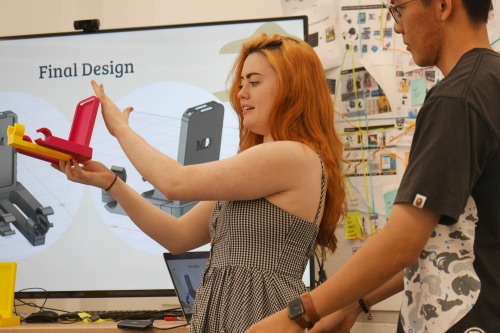
Brown University’s School of Engineering has developed a design engineering concentration that integrates the rigor of the physical science world with the context and understanding of the world in which we live. Design engineering is the newest bachelor of science program in the School’s complement that will teach students to understand not just the how and what, but the why and why not of what is being created, the strategic implications and consequences, as well as the suitability of proposed solutions. Assistant Professor Dan Harris (fall) and Professor Roberto Zenit (spring) will serve as the undergraduate concentration advisors.
Design engineering is a practice-based field at the intersection of many existing fields such as mechanical engineering, engineering design, electrical engineering, computer science and human computer interaction, user experience and user interface design (UX/UI), product design, graphic design, organizational psychology, and data science.
Uniquely positioned to develop this inter- and multidisciplinary talent by leveraging the strengths of the Open Curriculum and the type of student Brown attracts, there is natural potential for stronger ties with other campus departments as well as the Rhode Island School of Design. Many students arrive at Brown strong in both STEM and arts (STEAM), and the new design engineering concentration is structured to allow for integrating both instead of asking students to choose.
Ryan Brown ’15, Sc.M. ’16 said, “My initial exploration of design engineering as a student at Brown came from my attempts to reconcile my rigid engineering curriculum with the intellectually-creative liberal arts environment I otherwise inhabited on College Hill. In the School of Engineering, I found myself inspired by the creative and passionate people around me, but struggled to understand how to bring these motifs to my technical classes. I came to believe that Brown was uniquely positioned to provide a special kind of engineering education. Brown is both a long time leader in technical scientific education and is a global example of creative outside-the-box education in its adoption and application of the Open Curriculum.”
“Design engineering at Brown has been a long time in the making,” said Eric DuBois ’20. “It has taken nearly ten years of students, faculty, and members of the Brown engineering and engineering-adjacent community engaging in advocacy for a degree that leans heavily into Brown’s Open Curriculum and the School of Engineering’s dedication to providing undergraduate students with the opportunity to develop broad engineering knowledge and apply this knowledge practically.”
Key learning objectives for the concentration are to effectively apply engineering principles and quantitative analysis to make design decisions, utilize complementary and conflicting principles from domains other than engineering in design decisions, adeptly apply systemic principles to show interactions within and between systems, achieve fluency in human centered and systems design processes and principles to analyze and synthesize responses to complex real-world problems, prepare students to engage across diverse teams to identify problems and develop solutions in ways that benefit from distinct experiences, backgrounds and points of view, and cultivate competencies to identify structural disparities and develop approaches to create solutions to advance equity and improve outcomes for all communities.
“I am incredibly excited that design engineering has been approved as a concentration within Brown’s School of Engineering. It is amazing to see how the BDW and design community at Brown has grown since the 2016 student-led GISP (group independent study project) which identified design engineering as a critical priority for students. In today's rapidly evolving world, Brown’s future design engineering graduates will be able to leverage their technical expertise, creativity, and problem-solving skills to innovate on solutions for pressing global issues and make a positive impact,” said Sarah Dugan ’17.